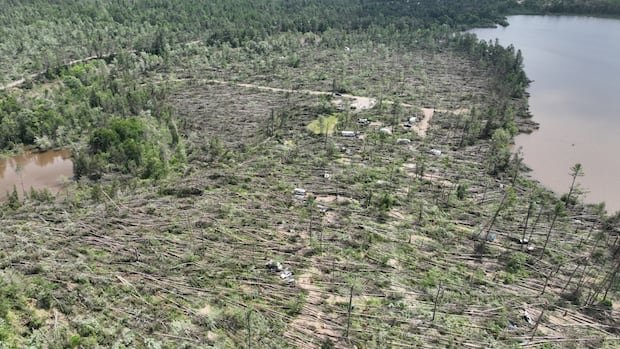A severe downburst hit Samuel de Champlain Provincial Park on June 21, causing extensive damage by toppling numerous trees. If this storm had struck an urban region, the strong winds could have inflicted significant harm to structures.
According to Connell Miller, the interim head of Western University’s Northern Tornadoes Project, the frequency of destructive storms is on the rise due to climate change. However, making minor adjustments to Ontario’s Building Code could enhance the protection of residences from potent winds. Miller suggested that reinforcing wall-to-roof connections with 12-inch screws instead of nails during new home construction, at an estimated cost of $200 to $300, could prevent roofs from being torn off, rendering the house uninhabitable.
Miller emphasized that such modifications could enable homes to endure approximately 95% of tornadoes that touch down in Canada. Meanwhile, the primary climate-related risks to properties in Canada are flooding and wildfires, rather than just strong winds.
Blair Feltmate, who leads the University of Waterloo’s Intact Centre on Climate Adaptation, highlighted the escalating damage from catastrophic weather events such as flooding and wildfires. He noted that from 1983 to 2008, annual home insurance claims in Canada related to these events averaged $250 million to $450 million. However, in the past 15 years, this figure has surged to around $2.8 billion annually, indicating a concerning trend of worsening conditions.
Feltmate underscored that around 1.5 million homes in Canada no longer qualify for basement flooding insurance due to their location in floodplains. While provincial building codes are gradually acknowledging these risks, regulatory updates remain sluggish. The Intact Centre on Climate Adaptation now produces infographics that municipalities can disseminate to residents, offering practical tips to safeguard residences against flooding and wildfires.
Rob Fleury, the proprietor of HP Home Design in Sudbury, Ont., specializing in passive house design, emphasized the importance of constructing more energy-efficient homes to combat extreme heat. By incorporating superior insulation, strategic window placement, and large overhangs on south-facing walls, homeowners can reduce reliance on air conditioning and lower energy expenses significantly.
Although passive houses in northern Ontario are typically 20 to 25% costlier to build than standard homes, Fleury emphasized the long-term cost savings through reduced energy consumption. Despite the current low demand for passive houses, Fleury remains optimistic that increased production of prefabricated homes could help reduce costs in the future.


